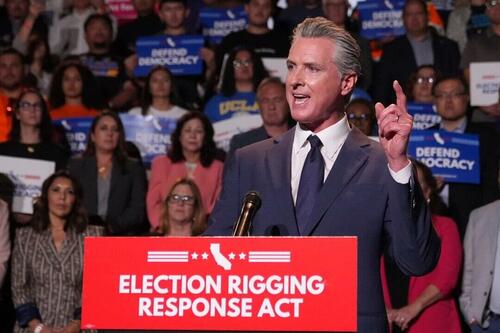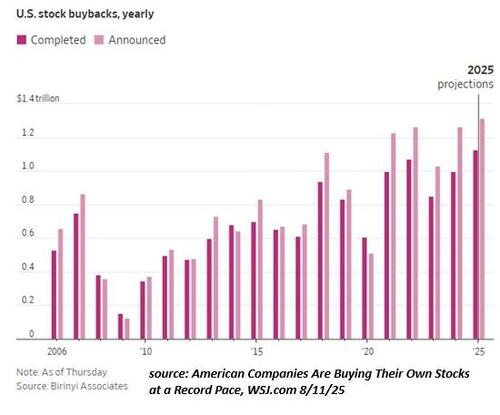NATO Meets as Trump Declares Iran-Israel Ceasefire
Source: The Iron Wire
(0:00 - 0:13) I'm Will Dove. And I'm Hannah Bern, and these are the top stories for today, Tuesday, June 24. Donald Trump announced a ceasefire last night between Israel and Iran, but it has proven shaky at best. (0:14 - 0:51) The NATO summit begins today in the Netherlands, where Carney is stopping short of making any new commitments, and a special report on the best clothing choices for those of you suffering through the heat wave in the central and eastern parts of the country. A hopeful ceasefire deal brokered by U.S. President Donald Trump between Israel and Iran has, in the intervening hours, been both reported as holding and not. Last night, Trump declared he had achieved a complete and total ceasefire between the two nations, following nearly two weeks of intense missile exchanges, a period dubbed by Trump as the Twelve-Day War. (0:53 - 1:21) The agreement was meant to follow a cooling-off period during which each nation would wind down ongoing military operations. The ceasefire announcement came after the U.S. launched major airstrikes over the weekend on three Iranian nuclear sites—Fordow, Natanz, and Esfahan—using bunker-buster bombs and decoy bombers. Iran retaliated by attacking the largest U.S. military base in the Middle East, though no Americans were injured and no major damage was reported. (1:22 - 1:48) Iran also responded with a barrage of missile attacks on Israeli cities, killing 28 people and injuring over 3,000, according to Israeli medical officials. Over 500 missiles were launched by Iran with approximately 30 striking Israeli territory. Following Trump's announcement of the ceasefire, early this morning Israel accused Iran of breaching the agreement by launching ballistic missiles shortly after it was meant to take effect. (1:48 - 2:04) The Israel Defense Forces stated that two ballistic missiles were intercepted. Sirens were reported in Israel before 6 a.m. local time. The attack resulted in four people killed and at least a dozen injured when missiles struck a residential building in southern Israel. (2:04 - 2:33) In response, Israeli Defense Minister Israel Katz said he had instructed the IDF to respond forcefully to Iran's violation of the ceasefire with intense strikes against regime targets in the heart of Tehran. Israel claimed it had agreed to Trump's ceasefire only after believing Iran's dual immediate existential threat of nuclear weapons and ballistic missiles had been neutralized by the U.S. strikes. Iran, for its part, maintained a contradictory stance. (2:34 - 2:54) Foreign Minister Abbas Araghchi claimed Tehran had stopped its retaliation at 4 a.m. local time but denied the existence of any formal ceasefire agreement with Israel. He stated that Iran had no intention to continue military operations if Israel ceased its attacks, as per Trump's announced plan. Trump himself expressed frustration with both sides. (2:55 - 3:14) On his Truth Social platform, he suggested Iran might have fired perhaps by mistake and criticized Israel for aggressively striking Iran during the ceasefire's early hours. Reports from this afternoon seem to suggest that both sides have now stopped firing. However, given the nature of the region, it seems unlikely the current ceasefire will hold. (3:16 - 3:56) Today in The Hague, NATO leaders gathered for the start of a pivotal summit as U.S. President Donald Trump pushed for a groundbreaking, ambitious defense spending goal, calling on allies to dedicate 5 percent of their national GDPs to collective security, more than double the current threshold. The move comes in a global environment that gives all signs of escalating toward World War III. Currently, only 23 of NATO's 32 member states are meeting the previous 2 percent spending target set after Russia's invasion of Ukraine in 2014, a significant jump from just three countries a decade ago. (3:56 - 4:34) The United States, led by Trump, has renewed pressure for a more robust commitment since his return to the White House in January, arguing that the previous benchmark is insufficient in today's volatile security landscape. NATO Secretary-General Mark Rutte, in his first summit as alliance chief, has proposed a split target, 3.5 percent of GDP for core defense and an additional 1.5 percent for infrastructure and industrial capacity. This approach is designed to appeal to European partners facing budgetary constraints by allowing flexibility in how they meet the targets. (4:34 - 5:01) Elements such as border security, cyber defense and energy resilience may be counted toward the broader security expenditure. The U.K., under Prime Minister Keir Starmer, has pledged to meet the 5 percent target by 2035. National security spending is expected to reach 4.1 percent by 2027, with core defense rising from 2.3 percent to 2.6 percent in the near term. (5:01 - 5:40) After pledging two weeks ago to meet the original 2 percent of GDP benchmark by March of next year, Mark Carney has made no commitments to meet the new 5 percent goal, only stating that it would cost Canada $150 billion to do so. Meanwhile, opposition to the ambitious new target has emerged from within the alliance. Spain, which allocated just 1.3 percent of its GDP to defense in 2024, the lowest among NATO members, sought and reportedly secured an opt-out from the 5 percent goal, although NATO officials have formally denied this. (5:40 - 6:12) The timeline for meeting the new spending benchmark is also contentious, with Baltic states pushing for a 2030 deadline, while most allies favor a later target, likely 2035. The summit also highlights the alliance's evolving strategy toward Russia and Ukraine. Despite pressure from European nations and Ukraine for new sanctions on Russia, Trump has been less enthusiastic, arguing at the recent G7 meeting that they are costly and may have worsened the conflict in Ukraine. (6:13 - 6:49) Ukrainian President Volodymyr Zelenskyy, while invited to the summit dinner, will not participate in formal NATO discussions, as Ukraine is not a NATO country and the alliance's debate on Russia's strategy has reportedly been removed from the agenda. While temperatures in western Canada have been unseasonably chilly, central and eastern Canadians have been suffering under an early summer heatwave for the past week, with temperatures in some areas peaking well above 30 degrees. In an effort to bring those affected some relief, we have this report on the best clothing options to stay cool. (6:50 - 7:15) Selecting the right attire can not only help you cope with soaring temperatures, but may also allow for higher settings on air conditioning, up to 2 degrees Celsius higher, according to researchers, which translates to significant energy savings. The first consideration is the type of heat being faced, dry or humid. In dry heat, moisture from sweat is more easily absorbed by clothing and then evaporates, providing a cooling effect. (7:16 - 7:40) In humid conditions, the air is already saturated with water vapour, so sweat evaporates less readily and damp clothing traps heat. When it comes to colour, conventional wisdom says to wear white in the summer because it reflects the sun's rays, unlike black, which absorbs them. However, a 1980 study on Bedouins found that heat exposure was the same whether they wore black or white robes. (7:41 - 8:01) The reason? Loose-fitting black clothing traps heat in the space between the fabric and the skin, creating an upward current of air that cools the body. In short, the fit of the clothing is often more important than the colour. If clothing is tight-fitting, white is preferable, but loose black garments can offer similar or better cooling in breezy conditions. (8:02 - 8:20) Material choice is another crucial consideration. Lightweight woven fabrics, such as cotton and silk, are generally better at hanging loosely than knits. Uncoated cotton, linen, nylon, and polyester are all considered breathable to various extents, allowing sweat and heat to escape. (8:21 - 8:47) However, cotton absorbs moisture but does not dry quickly, which can make clothing uncomfortable if you sweat heavily. Linen has excellent breathability due to its large fibres, but it also dries slowly. Rhett Allain, Associate Professor of Physics at Southeastern Louisiana University, states, In terms of clothes, it's better to have a material that allows water vapour to pass through so that it doesn't block the sweat evaporation. (8:48 - 9:10) Allain also points out that simply getting clothing wet is an effective way to stay cool, as the evaporation of water uses heat from the body, lowering skin temperature. Of course, practical considerations, such as modesty and sun protection, can affect how much clothing you choose to wear. Recent scientific advances have produced innovative fabrics designed to keep the body cool. (9:11 - 9:37) For example, researchers at MIT have engineered materials that reflect visible light, sunlight, but are transparent to infrared, body heat, allowing heat to escape. Other groups have developed synthetic fibres with coatings that change structure in response to heat, enabling greater heat dissipation as temperatures rise. In summary, staying cool during a Canadian heat wave involves more than just reaching for a white T-shirt. (9:38 - 9:55) The right combination of fit, fabric, and even moisture can help keep your body temperature down, while also reducing energy consumption from overworked A.C. systems. I'm Will Dove, and I'm Hannah Bern, and those are the top stories for today, Tuesday, June 24th.











